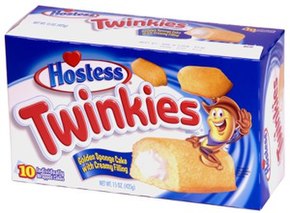
After Twinkie maker Hostess announced bankruptcy and plans to close its doors forever, people flocked into stores to fill their shopping baskets with boxes of cream-filled sponge cakes and other snacks such as Ding Dongs, Ho Hos and Zingers.
Opportunists began marketing their hoard to whimsical collectors and junk-food lovers for hundreds and in some cases, thousands of dollars. The profit margin is extremely fat, taking into account that the retail price for a box of 10 twinkies is $5. Since Hostess has closed its bakeries, it is clear that twinkies are worth more compared to before.
Edmonds, 50 was one of the many people who spent a couple of hours driving around stores to purchase twinkies. He wound up with 16 boxed of twinkies and Ding Dongs and started advertising three boxes for a price of $300.
It is not surprising to see the novelty effects when demand for a product skyrockets due to the its existence being threatened. Twinkies was started in 1930 and the american people have grown up accustomed to the popular snack. Knowing that the twinkies are no longer produced, there is no doubt that many americans are going to crave the product and some finding it worthwhile to collect them.
The Twinkies are still produced in Canada by Saputo Incorporated’s Vachon Inc. We might expect their business to boom, mainly in exports to the United States as demand for the product has greatly increased.
The article can be found here

